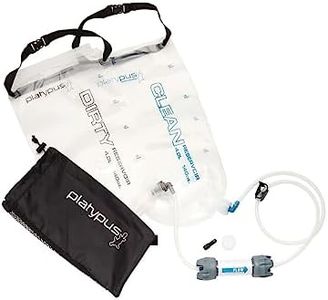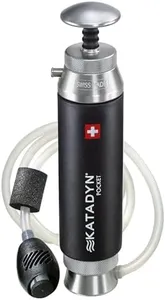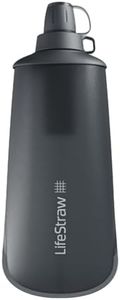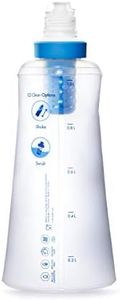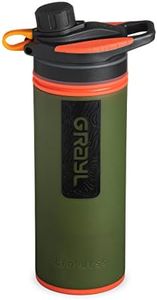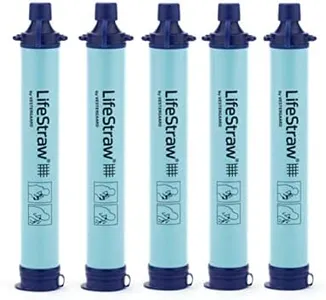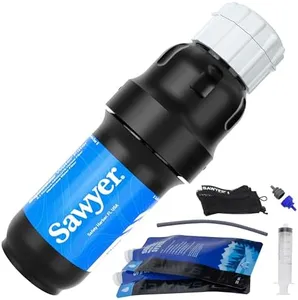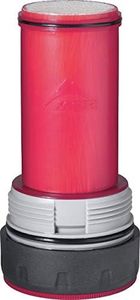We Use CookiesWe use cookies to enhance the security, performance,
functionality and for analytical and promotional activities. By continuing to browse this site you
are agreeing to our privacy policy
10 Best Hiking Water Filters
From leading brands and best sellers available on the web.Buying Guide for the Best Hiking Water Filters
Choosing the right hiking water filter is essential for your safety and comfort when exploring the outdoors. A water filter helps you turn water from streams, lakes, or rivers into safe drinking water. To pick the best one for you, it's important to think about how you hike, where you'll use the filter, and how easy it should be to use and carry. Knowing your typical group size, the types of water sources you'll encounter, and how quickly you need water will all help point you toward the best option.Filter Type (Pump, Squeeze, Straw, Gravity, UV)The type of water filter refers to the mechanism it uses to make water safe. Pump filters require manual pumping, squeeze filters use pressure from squeezing a bag, straw filters let you drink directly from the source, gravity filters filter water as it hangs from a container, and UV filters use ultraviolet light. Each type varies in convenience, speed, weight, and how much water it can process at one time. Choose a method that matches your trip style: gravity and pump filters are good for groups and larger volumes, squeeze or straw models suit solo or minimalist hikers, while UV pens are fast but require batteries.
Filtration Level (What it Removes)Filtration level tells you what contaminants the filter can remove, such as bacteria, protozoa, and some even viruses. Most basic filters remove bacteria and protozoa, which are the main threats in the backcountry, but do not remove viruses unless labeled as a purifier. If you hike in remote or developed areas where viruses may be present, like some developing countries, you'll want a purifier. Otherwise, a standard hiking filter is usually sufficient.
Flow RateFlow rate is how quickly the filter processes water, usually measured in liters or ounces per minute. Faster flow rates mean less waiting time, but sometimes require more effort or weigh more. Low flow rate is often acceptable for solo hikers with patience, while groups or those who want to refill water quickly should look for higher flow rates.
Weight and SizeWeight and size determine how convenient your filter is to carry, especially on long hikes. Lighter and smaller filters are great for ultralight backpackers or solo day hikers, but may be slower or less durable. Larger filtersare often more comfortable to use for groups or for filtering large quantities of water at once, but can take up more space in your pack.
Ease of Use and MaintenanceEase of use is about how simple it is to set up, use, and clean your filter, which affects your experience on the trail. Some filters need regular backflushing or cleaning to stay effective; others need careful handling of parts. If you value simplicity or are new to using filters, look for models that are straightforward to assemble and require minimal maintenance.
Lifespan/Filter CapacityLifespan or filter capacity refers to how much water the filter can treat before the cartridge or component needs replacement. Some filters last for thousands of liters, while others have a much shorter life. Think about how often you'll use it, how long your typical trips last, and how easy it is to find replacements when making your choice.

